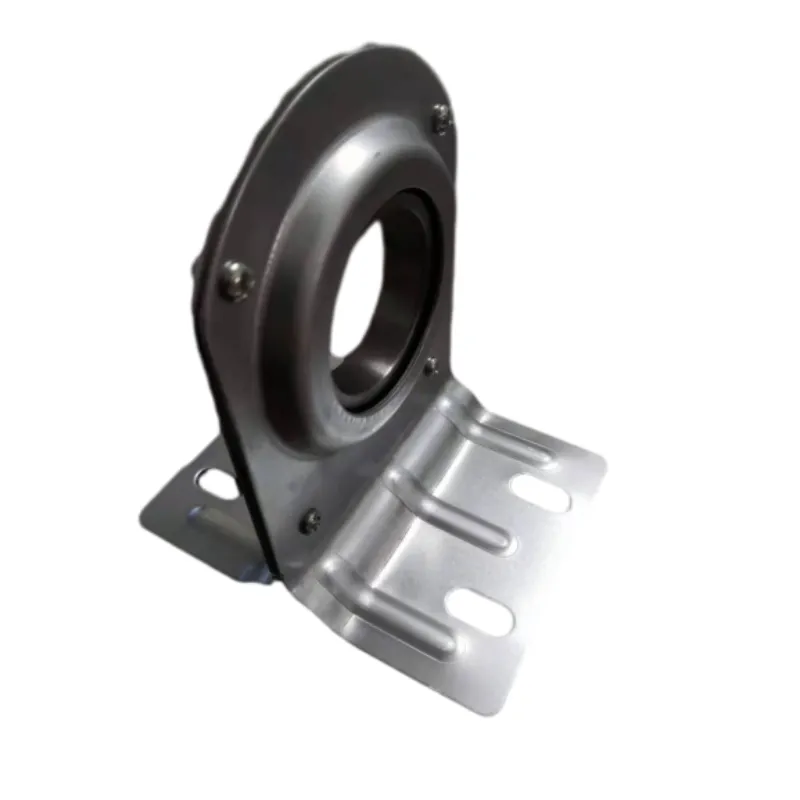
Dec . 07, 2024 13:26 Back to list
angular contact ball bearing
Angular Contact Ball Bearings An In-Depth Overview
Angular contact ball bearings are a type of rolling element bearing that are designed to accommodate both radial and axial loads. They are characterized by their ability to handle thrust loads in one direction, making them particularly suitable for applications that require high precision and reliability. This article will delve into the features, applications, and advantages of angular contact ball bearings, illustrating why they are a popular choice in various industries.
Design and Structure
Angular contact ball bearings are composed of an inner and outer ring, ball elements, and sometimes a cage that holds the balls in place. The key distinguishing feature of these bearings is the angle at which the balls contact the raceways. This angle, known as the contact angle, allows the bearing to support axial loads in addition to radial loads. The contact angle typically ranges from 15 to 40 degrees, and the angle can be adjusted based on the specific requirements of the application.
The design of angular contact ball bearings allows them to operate efficiently under high speeds and temperatures. The balls are held in place by a cage, which prevents them from colliding with each other, thus minimizing wear and tear over time. Additionally, because of their construction, these bearings can be paired to handle even greater axial loads by stacking them back-to-back or face-to-face.
Applications
Angular contact ball bearings are widely used in various applications across multiple industries. Some common applications include
1. Machine Tools They are essential in precision machining equipment where both axial and radial loads are present, such as in spindle assemblies.
2. Electric Motors These bearings are crucial for ensuring the smooth operation of electric motors, as they can handle both the axial and radial forces generated during operation.
3. Aerospace In the aerospace industry, angular contact ball bearings are used in aircraft engines and landing gear due to their ability to withstand extreme conditions.
angular contact ball bearing

5. Robotics and Automation Precision movement in robotic arms and automated assembly lines often depends on the reliability of angular contact ball bearings.
Advantages
The use of angular contact ball bearings offers several advantages
1. High Load Capacity With their ability to handle both radial and axial loads, these bearings are ideal for applications where heavy loads are present.
2. Versatility They can be utilized in a wide range of applications, from industrial machinery to consumer products, making them versatile components in design.
3. High-Speed Capabilities Angular contact ball bearings can support high rotational speeds while maintaining stability and performance.
4. Precision and Stability These bearings provide high precision in movement, making them suitable for applications that require accuracy, such as CNC machines.
5. Reduced Friction The design reduces friction between moving parts, which improves the lifespan of the bearing and the overall efficiency of the machine.
Conclusion
In summary, angular contact ball bearings are an essential component in many mechanical systems that require reliability, precision, and high load capacity. Their ability to support both radial and axial loads makes them unparalleled in applications that demand high performance under stress. As industries continue to evolve and demand more efficient solutions, the role of angular contact ball bearings becomes increasingly critical. Whether in aerospace, automotive, or industrial applications, these bearings play a vital role in ensuring the reliability and efficiency of numerous systems and machinery. As advancements in technology continue, the design and application of angular contact ball bearings are likely to expand, further cementing their place as a key component in modern engineering and manufacturing.
Latest news
-
Grooved Ball Bearing Design and Functionality
NewsJun.04,2025
-
Concrete Mixer Bearing Load Capacity Testing
NewsJun.04,2025
-
6004 Bearing Dimensions in Robotic Joint Designs
NewsJun.04,2025
-
Advantages of Single-Row Deep Groove Ball Bearings
NewsJun.04,2025
-
Applications of Deep Groove Ball Bearings in Automotive Systems
NewsJun.04,2025
-
Innovations in Bearing Pressing Machine Design
NewsJun.04,2025
